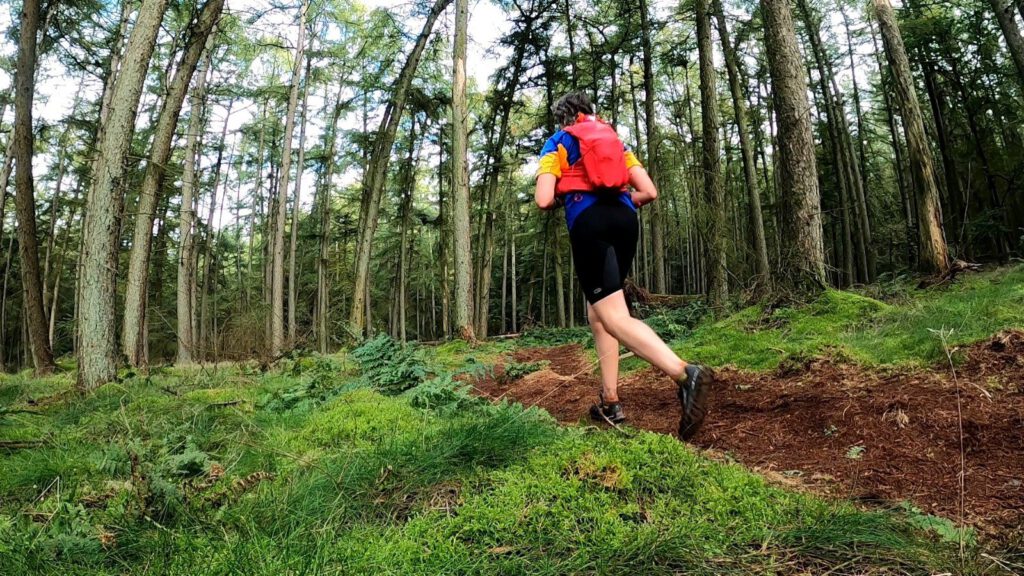
Self-supporting while running for 87 km. It's not an easy task, but running the race was not an option psychologically speaking. How did I survive? A report per running kilometer.
That which I had feared for weeks, if not months, became true last Wednesday. Indian Summer Ultra (ISU) fell prey to corona. After the registration in February I had trained hard for it with the necessary 50 and 60 km training runs, disguised as long-distance walking routes. Along the way I already lost my running buddy Ramona to a hernia and I was quite nervous because of the distance, but I kept hope. For months it was a beacon for me to get rid of the corona troubles and work problems (an extremely exhausting project). And if the ISU had been a week earlier, it could have continued. But that was in vain.
In the meantime I still had my rented mobile home at the starting location. I doubted: will I go or not? Eventually a yes. Will I do part of the route to stay within daylight? That didn't feel right at all. I had something to prove myself, felt I needed a victory. That my primal power had to come out to keep believing in myself. The fact that Winfried (Bats; race director) came up with an adapted virtual route on Thursday, was the deciding factor to do the whole route anyway.
6.15 hours – 0 km
Just the will won't get you there. This trip needed extra planning. After all, there would be no drink posts, all catering is closed and supermarkets are not very common down in Drenthe. Especially the drink supply was a worry. Normally I do get through 3-3.5 liters of water and sports drink during a 60 km. In this case I took the whole drinking system of my Salomon racevest with me: six soft flasks and a 1.5 l water bag. And looked at what I could remove from the equipment: no warm clothing in case I got stranded, and above all, I had to strap everything in tightly. The order of necessity: drinking, eating, battery and then medical necessity. No room for the blood glucoe test set in this case.
With a heavily loaded racevest and a Petzl Iko Core, I was ready to start at 6.15am in front of the mobile home. Just a bit later than the normal start would have been, but I didn't expect to be the only one to run the ISU virtually today either. And I was right. Already within 500 m I was congratulated from a bench. They even seemed to mention my name, but my night vision was too bad to verify who they were (if you recognize yourself in the description, I apologize for not being fully awake).
During those first few kilometers I saw a lot of other runners, mostly in groups of two or three. First they loomed up behind me, little lights slowly approaching, then I saw them in front of me for a moment after which they turned a corner. And in some cases they came back because they deviated from the route.
I'm glad I've trained so much on gpx over the past few months, which has made me familiar with most of the quirks of the system. As a result, I quickly noticed whenever I was running the wrong way and I did not automatically follow Garmin's instructions (which deviate too often). It was also quite hard to find small paths in the dark as they were not always easily recognizable.
Searching in the modest beam for a more even row of trees or a slightly worn out path, often yielded the right result. But at a certain moment I was standing – and with me another group of runners – really near an untraceable path. Was the path under the leaves or not? Luckily the other runners knew that last year they took a passage a little further on, one that was visible on my map. We might find the original path in daylight, but I wouldn't be surprised if the gpx-route had a little mistake or shift.
Sunrise at the Gasselterveld – approx. 12 km
Secretly I don't mind running in the dark in the morning. The peace, the silence; also in your mind. Unfortunately that doesn't work in the evening with the same darkness. Not only because your head is already grinding away, but also because you miss the awakening of nature.
The light of my headlamp was less and less sharp against the surroundings, as a sign that twilight had begun. The first sounds of awakening birds and rising geese swarms. The golden-yellow edge of the clouds reflected in the surface of the Gasserterveld. No wonder that a small group of runners had settled down here to watch the rising sun from a hill.
Still, it felt a bit like a warning to me. I had been on the road for some time now and had only covered about 12 kilometers. Today was going to be a long day.
Toenails – approx. 20 km
Bad thoughts about long days never come alone. About 20 kilometers in I suddenly felt my right big toe. It was like a pebble was pressing on it. That is not good if you have to run almost 70 km and it may cause quite some blisters. After taking off my shoes and socks – thick Injinji trail socks – I found the problem. My firm nails had drilled themselves partly through the fabric of my socks, despite neat trimming. As a result, there was always an edge under my toenail, which caused the annoying feeling. Learn to live with it or cut it away? I chose the latter and fortunately I didn't even have a tiny blister in the end after 90 km.
However, another problem soon arose. I repeatedly failed to measure the blood sugars with my Freestyle Libre. Too cold, the sensor warned. And I hadn't taken that into account, because at home it was doing fine the last couple of days and it was still around 12 ºC while the sensor should officially work down to 5 ºC. Because of that I had to listen to my body even more, because I had left the blood tests at home to save space. However, it also meant that from time to time my blood sugars were too low to run and that I should not go too fast to keep sensing the body.
A bit later the blood sugar was really too low (first dosage of Ucan worked out and I was probably not drinking enough) because of the drop in speed. The nice thing about trail runners is that almost immediately someone passed by who wanted to help. It wasn't necessary fortunately, but for the next few kilometers we changed positions on the trail and even ran pieces together. It makes a long road a bit easier. Even though we all ran alone, the ISU still fraternized, a sentiment I also recognized in other passing runners.
Oak leaves – approx. 40 km
After solving the nutritional problem, I ran again. Secretly this Drenthe landscape reminded me of the routes of the Hertogenpad. Especially the stretches through swamps, peat and heathland were similar in terms of landscape.
How beautiful it was to walk here. Especially the morning fog that rose between the golden yellow grass, with a cow here and there, gave a special feeling. And that in peace and quiet. We really are privileged to be able to enjoy nature this way. Although there weren't many colored trees – it's mainly pine trees – the yellow culms indeed gave the feeling of having ended up in an Indian Summer.
The end of the first marathon run was approaching. But I didn't run very well anymore. The culprits were my bowels. If you read my blog regularly, you know that I always start the day of a big run with coffee, as I did today. But somehow it didn't work out this morning. I could not deny it after 40 km. After feeling ashamed for 2 km, I had to give in before the path pointed towards the meadows again. The last dense bushes and a pile of oak leaves as toilet paper brought enough relief to be able to walk on cheerfully towards the second marathon. Immediately I felt a lot lighter.
Walking and sensors – approx. 46 km
In the meantime the sun started to shine on the field. Not that I was physically bothered by the cold – except for the short walks– but it feels so much nicer to run in the rays of the sun. And hopefully the sensor would finally work now.
The latter proved not to be the case for a while. Until I suddenly felt so tired that I finally decided to walk one kilometer – giving up the race was not an option and on other occassions I had reached 60 km with relative ease, 20 more than where I was now at. Probably because of the hiking the blood was flowing to my arms again. As it turned out: the sensor suddenly functioned after 10 minutes of walking (for info: warming up for a short time doesn't help, it has to measure at least 10 minutes for a value). And the result was that I was somewhere around 4 mmol/l which explained my total collapse. Just a little extra walking and some additional eating and all was fine again.
On the cable – approx. 60 km
For a long time, I was able to shuffle on, although with slightly longer walking pauses. I passed the Dwingeloo radio telescopes, where you are supposed to turn off your phone officially. But what about the trackers we would have had at the race, my brain was struggling. Fortunately the astronomers had not yet seen this as a danger, because the nature around the telescopes – of which I saw only one in the distance – is very beautiful.
Meanwhile, I was also about 60-65 km away. As a precaution I decided to provide my Garmin Fenix 5x with some extra power. It would still have 19 percent battery life, but at this speed that wouldn't be enough to use the maps. Luckily, the flat charging cable helped me out, a few kilometers later I was already at the 64 percent without having to stop.
Barbed wire – approx. 75 km
It turned out that you have to use those maps as well as possible. My most hated terrain is grassland, especially along streams. It's uneven, the tussocks of grass hurt my feet in the thin Superiors, you waste a lot of energy because of the springy soil and you never know exactly if you're on the right side of a ditch or canal.
In this particular case the canal was indeed on the map and I ran nicely on the indicated side. Until suddenly there was a fence and the line crossed the canal. That can't be the intention I thought, as it's certainly one to two meters deep. But the wire was also very high and it was electrified. Removing the line was made impossible because someone had firmly anchored the hand piece with iron wire. Maybe there was a measurement error (10 m deviation from GPS can easily have been wrong in the map)? Error one of mine – or second as I did not look ahead on the track – was that I climbed over the fence while my legs were already quite stiff. The fence was much higher than average and it gave me an electric shock and a bleeding scratch.
The meadow that followed was full of half streams of dirty, smelly, reddish-brown mud. It wet my feet well. Only to get an even harder shock at the fence on the other side. This fence had the upper wire above the crotch. At the bottom there was a wire without current or barbs, where I could – after taking off the racevest – crawl underneath to continue the road through nettles. Here it was also clear that the other side was really the right one. But swimming through the canal in this cold weather while I was going so slow would bring a big chance of hypothermia.
Forest ranger – approx. 85 km
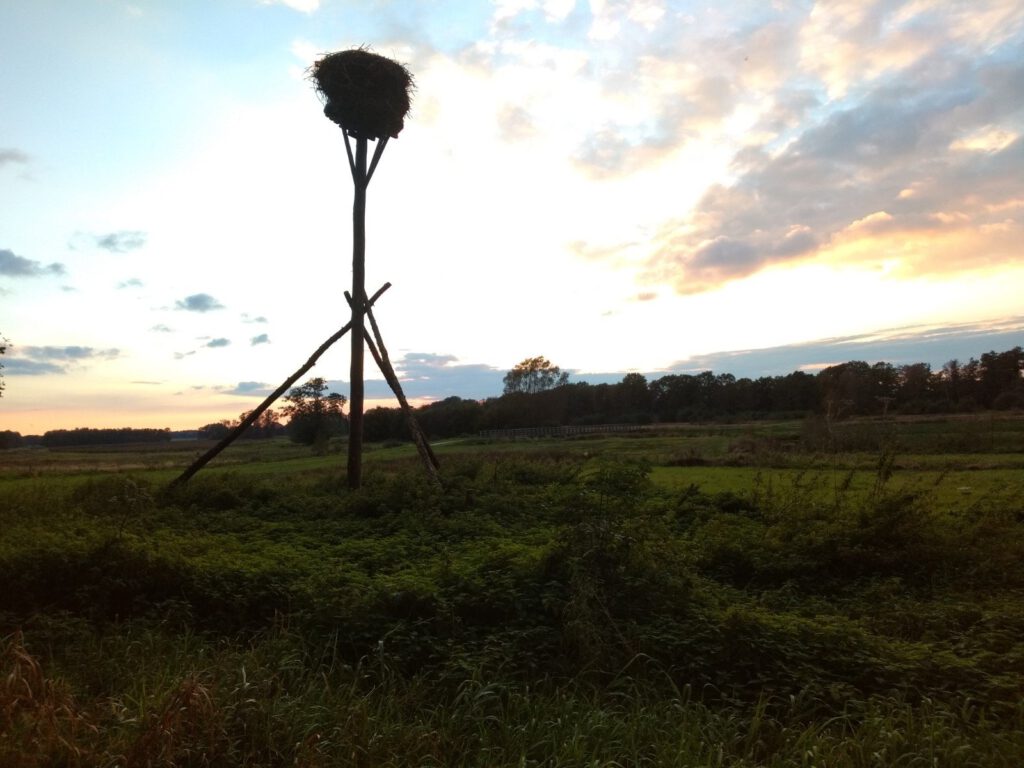
The Balloërveld looked pretty nice. But to be honest, those last 10 kilometers weren't really necessary to me. The speed was gone. The sensor again didn't work; a bag of Gold Bears brought some temporary relief against the slowness. And it became pitch dark. Like it only can be in the countryside: black with very small stars. So not that brownish light of the city with its emergency-lit offices, roads with lanterns and shining glasshouse.
During a real race it would have been easy: after dark you can run. The course was chosen together with representatives from local nature reserves to avoid nuisance for the animals and there is a permit to run there. However, in this case there was no race, which means that you actually have to stick to the opening hours of the nature parks. At Staatsbosbeheer this is usually between sunrise and sunset. But because of my inertia, that was no longer possible. And with a headlight on you are very visible in a nature reserve...
With less than 7 km to the finish, I thought I was really going to be stopped. Behind me I saw big lights, there seemed to be four of them, searchlights of a jeep driving very slowly along the wide dirt track behind me. The fright struck me and I was already making up what to say to the forest ranger. And I was doubting if he would allow me to run on towards the finish. I accelerated. He slowly lost terrain on me and I continued at full speed, until after a few sharp paths I saw nothing behind me anymore and calmed down again. I didn't think I could squeeze out another 2 km at speed, but I was glad to be able to slow down a bit by switching between running and walking for a while.
Until at some point the lamps were there again. This time a lot closer, maybe only 300 m away. Why so slow? He could catch up with me like that, couldn't he? Would he be angry that I ran on the small paths that marked the route, in what looked like flight behaviour? Would the evening permit for the race still apply if the forest ranger asked for it?
I went through a swing gate next to a cattle grid. The jeep wouldn't be able to get past here quickly as the gate had to be unlocked first. But a little later I heard the door close for a second time. At this speed it catches up with me easily, I thought. At the next fence another runner with a bright headlight passed me. He was also doing the 87 km and together we walked and ran for a bit. Where was that jeep now? Did the jeep exist at all? In the end the other runner had more reserves left than me and he took the lead with 1.5 km to go.
Food for thought
Once I was almost at the finish line, I saw the runner walk back to the car with his family. I was so glad that the campsite was in sight. I hurried inside, turned on the stove and checked my blood sugar. Which again was too low. Would I have done it a lot quicker with better blood sugar management today?
I think that question is justified. I ended up doing 14 hours and 34 minutes over 90.63 km. Now I'm never very fast, but I think this is certainly easy to improve. Beforehand I had estimated it would take me up to 13 hours based upon previous long distance runs. That still sounds like a reasonable time if only the blood sugar management would have been better.
When I arrived on the couch at around nine o'clock I did not feel like warming up my pancakes anymore. I ate whatever – among other things chips – was on hands, took a very long shower to warm up and went to sleep. I did take a picture of the food I had during the run as well:
- three bags of Generation Ucan, one I took directly before the start
- twice 500 ml Isostar
- two bags of gold bears
- three Snickers
- five gels
My breakfast the next morning consisted of the bacon pancakes for which I didn't have the courage after the run. The stiffness in my legs was not too bad. My father came to pick me up and getting up after the car ride to Vledderveen was just a bit painful. But a little walk with the dog and it all felt smooth again. I can safely say that I feel a lot better than after my first marathon. But whether I would run a 50 miler again remains to be seen. I might stick to 50-60 kilometer runs.
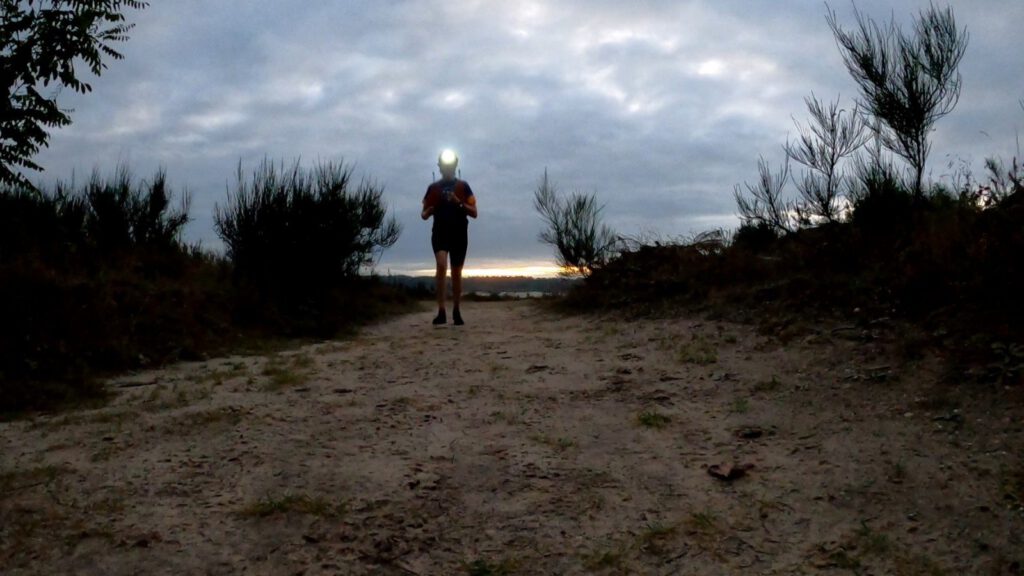
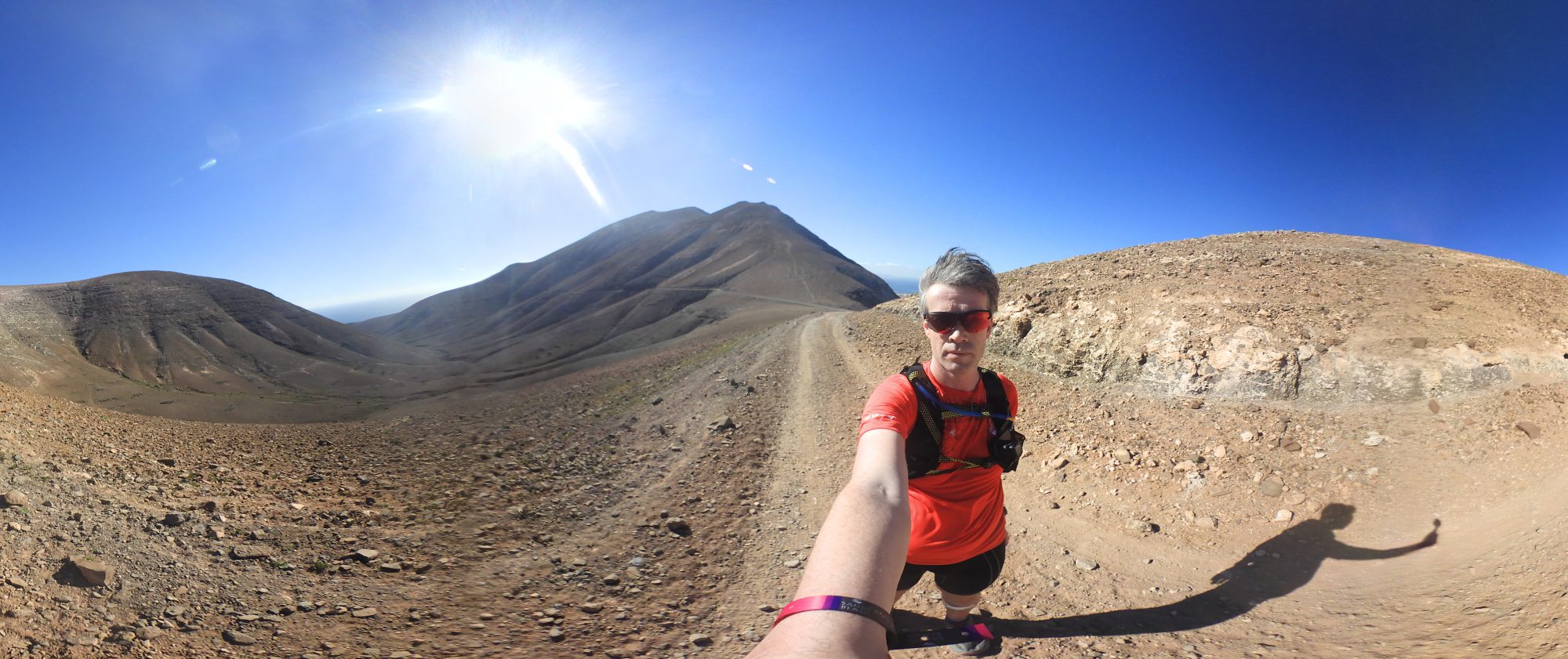
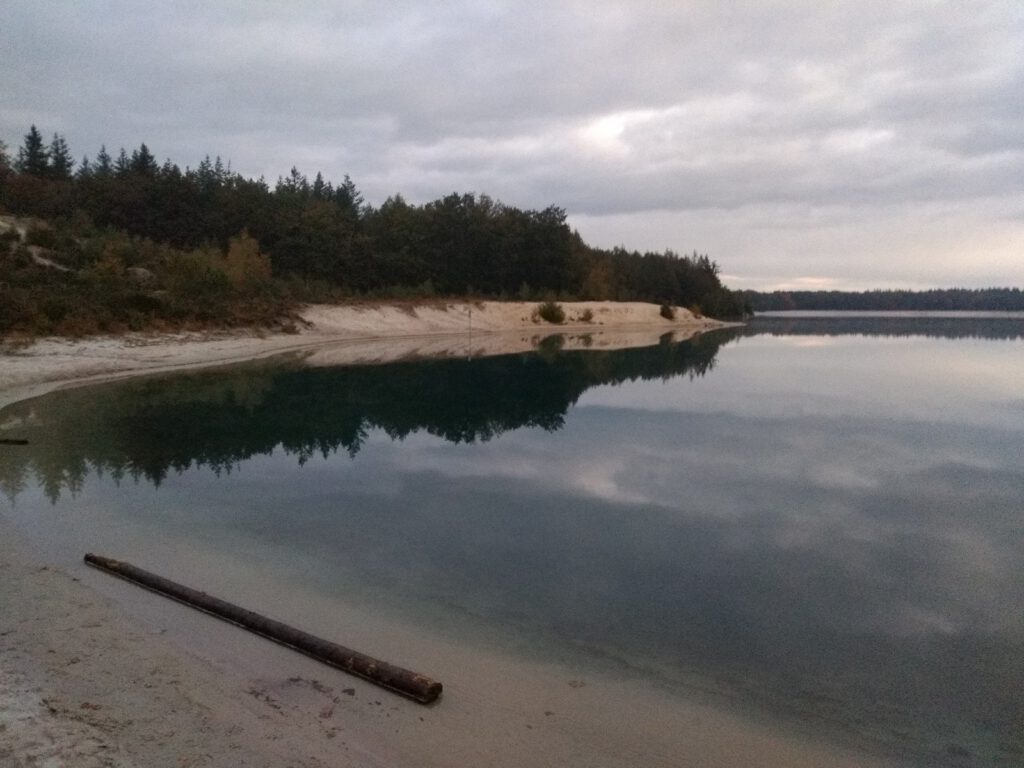
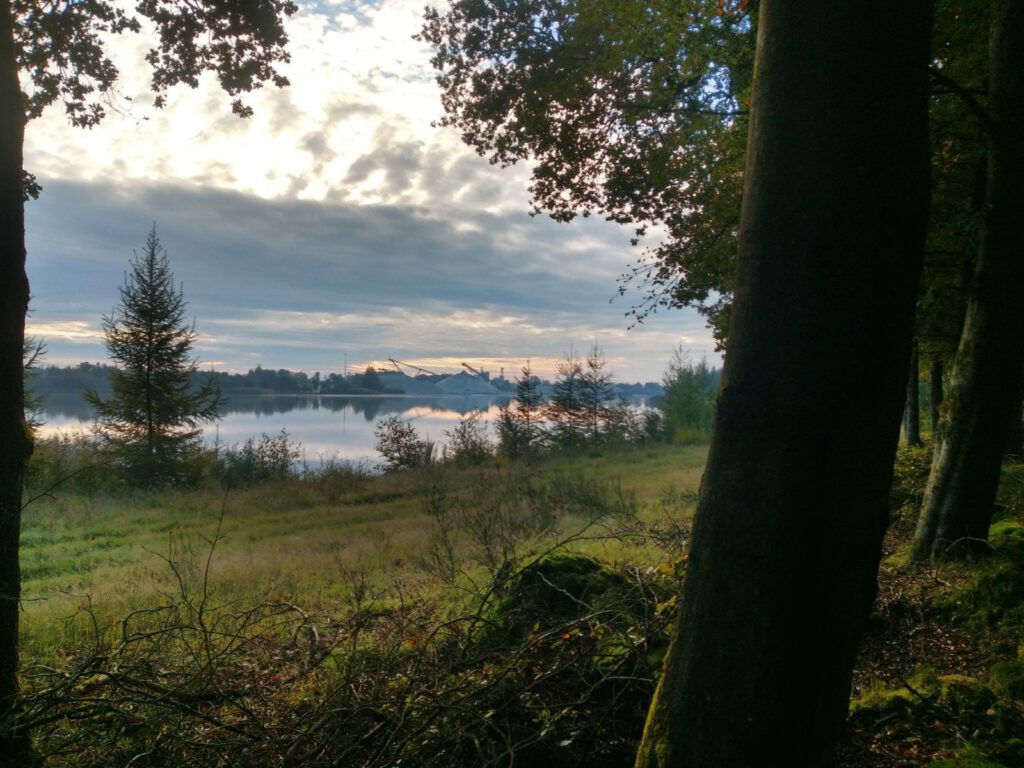
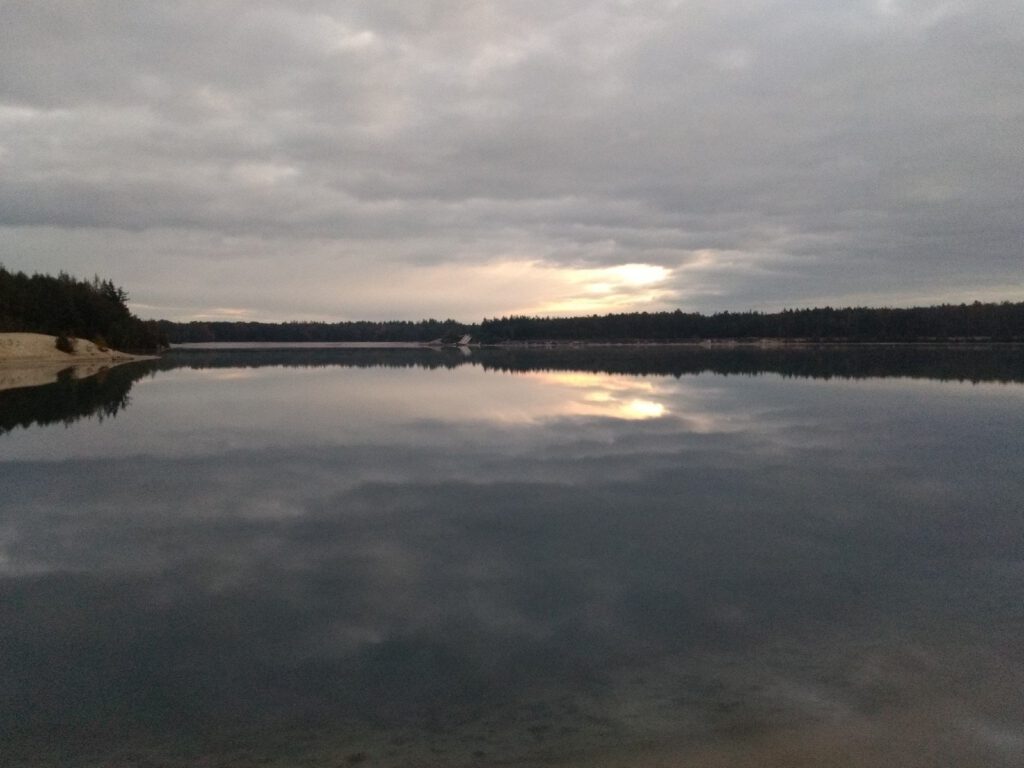
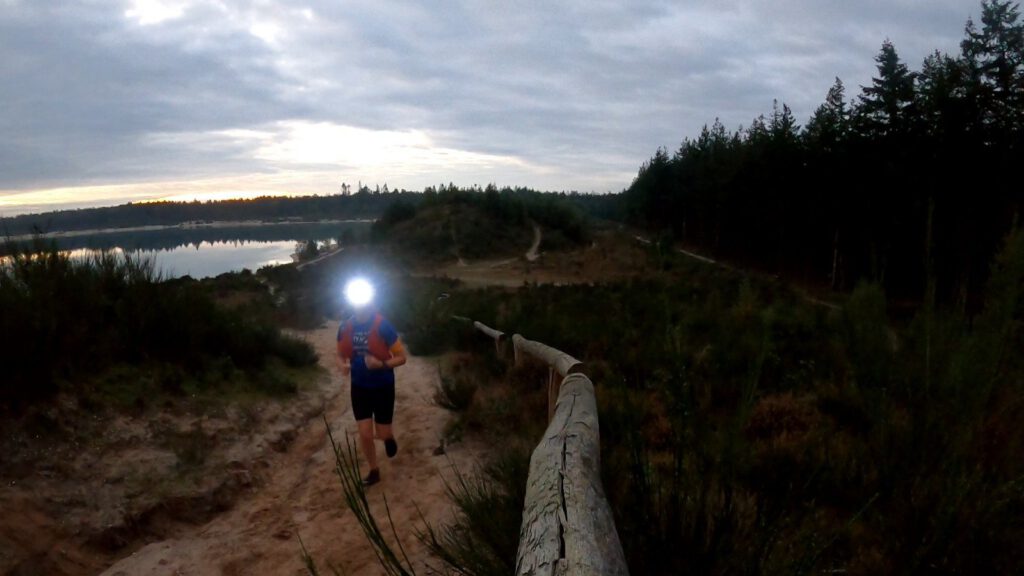
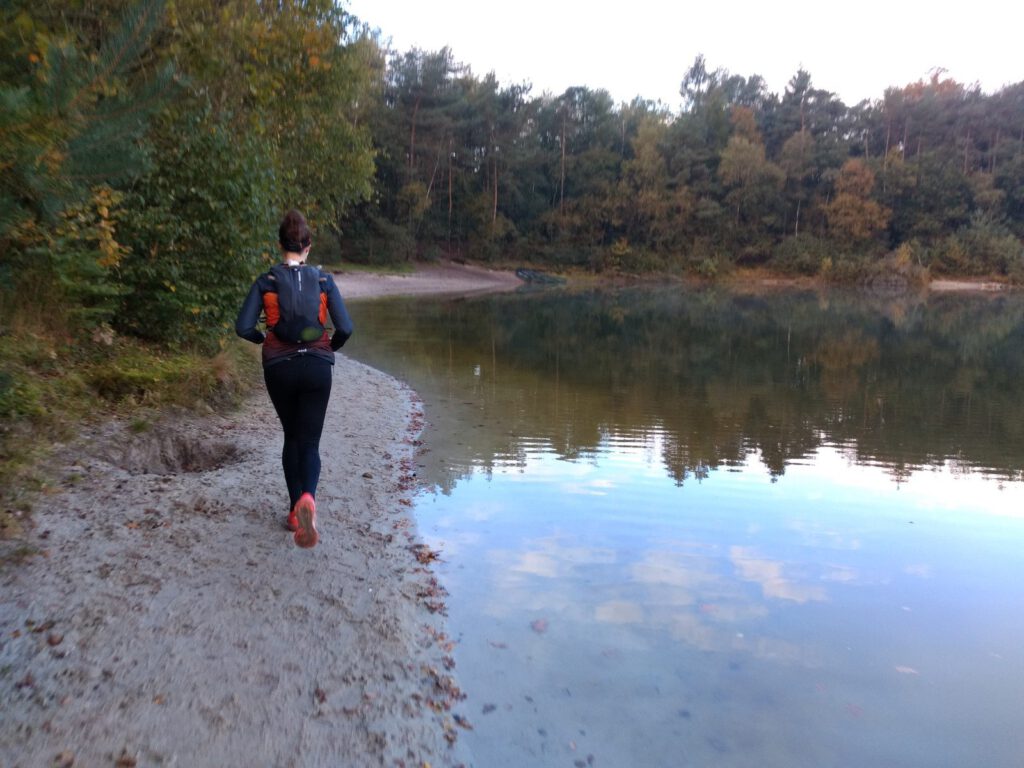
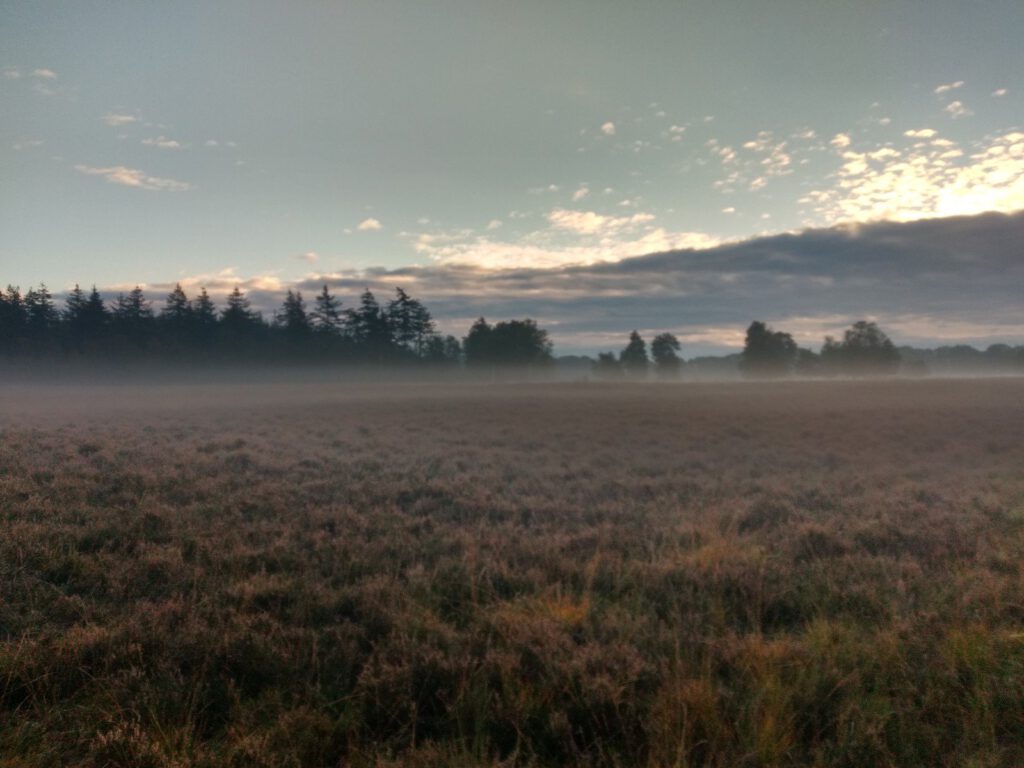
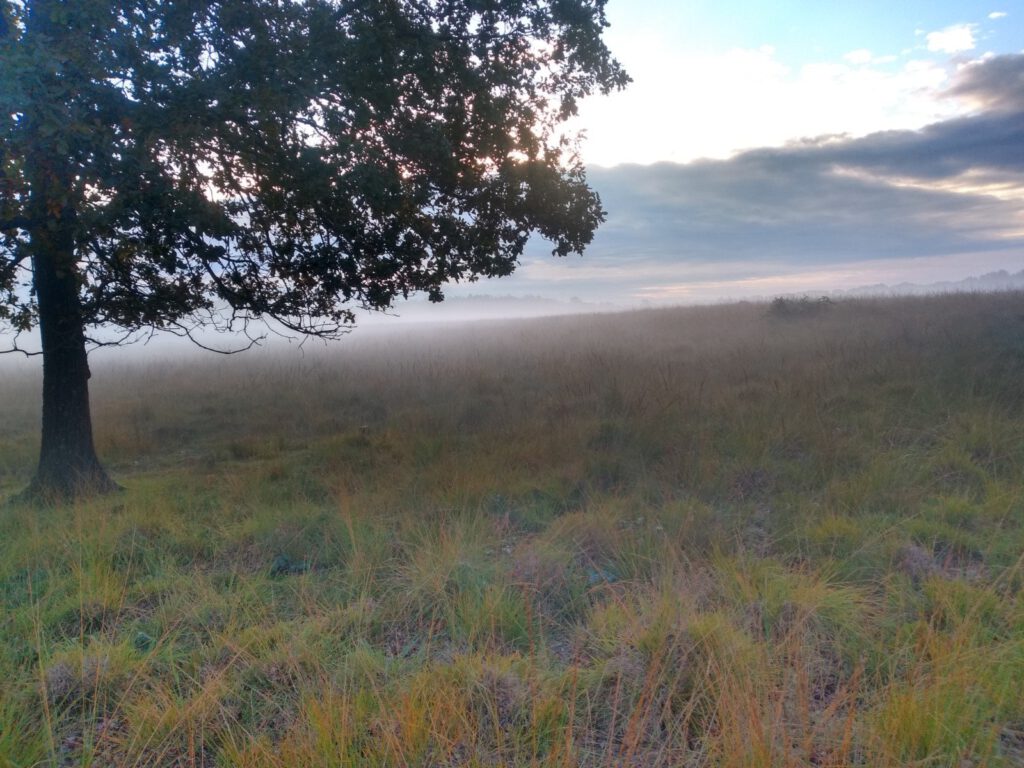
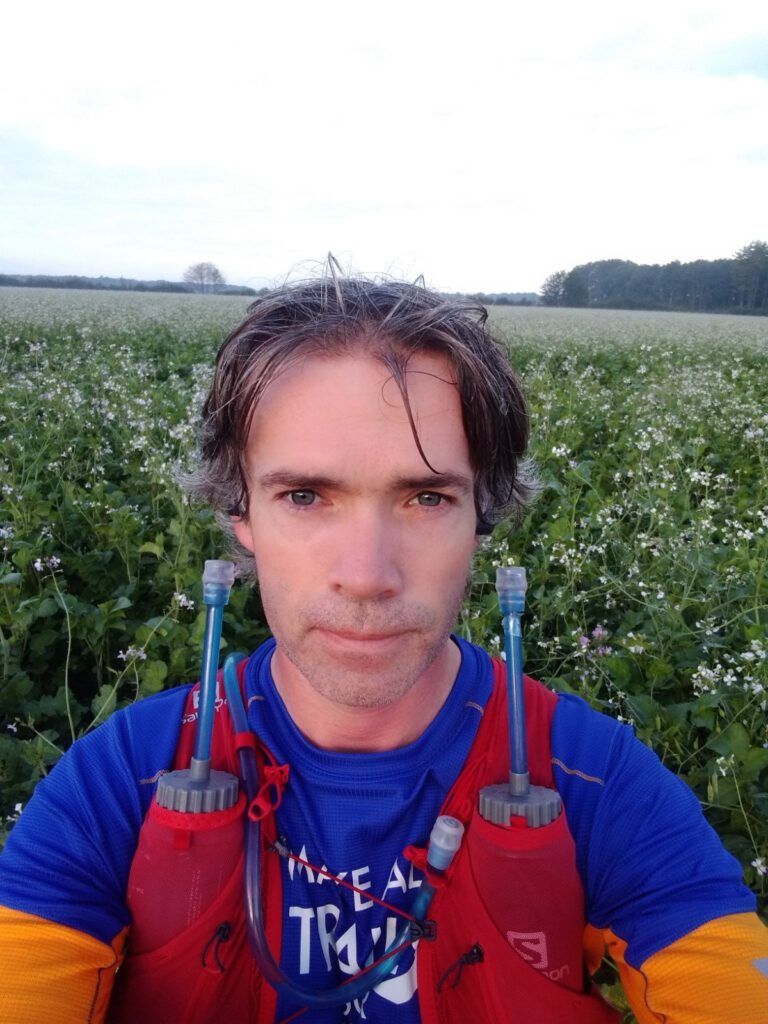
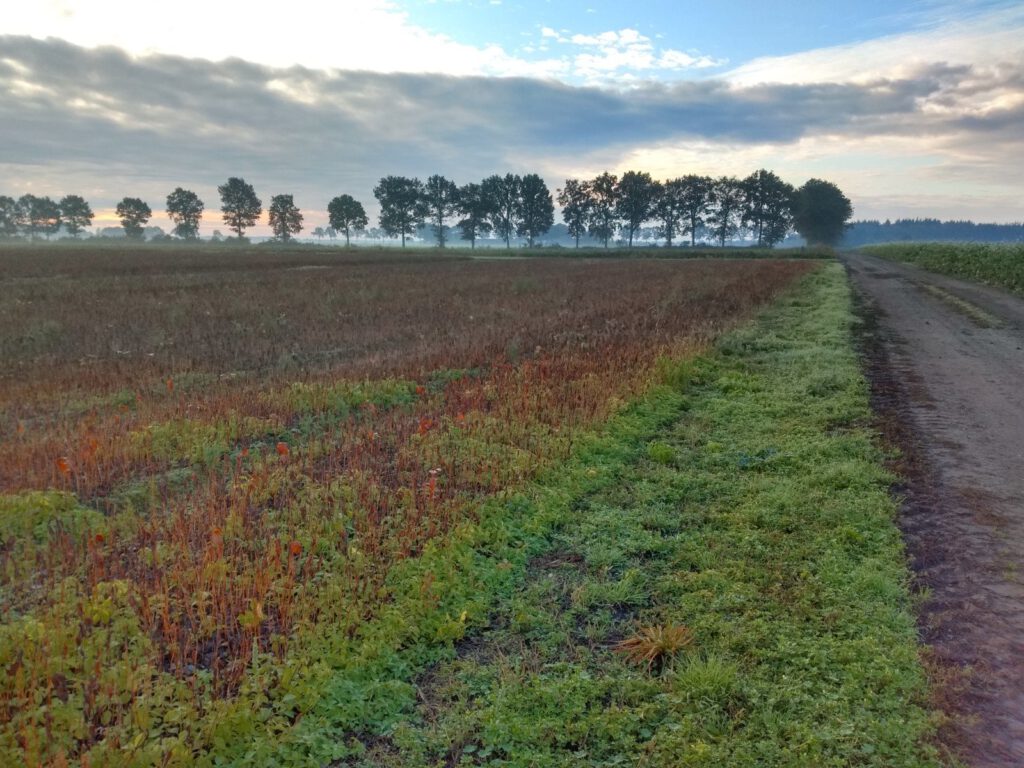
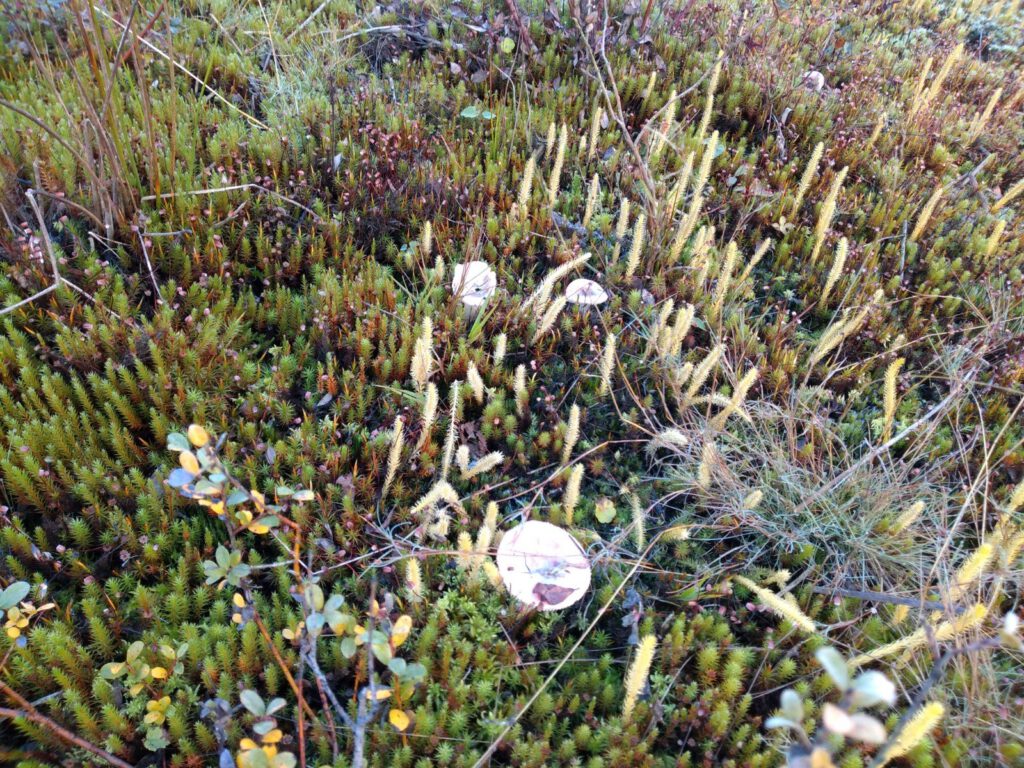

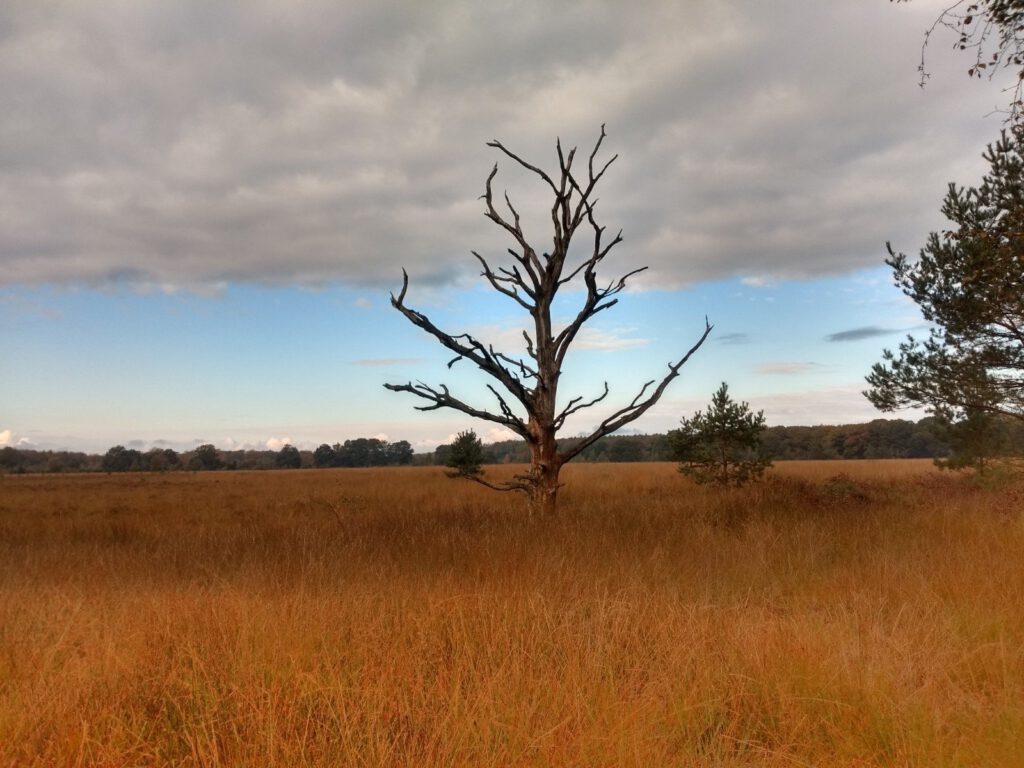
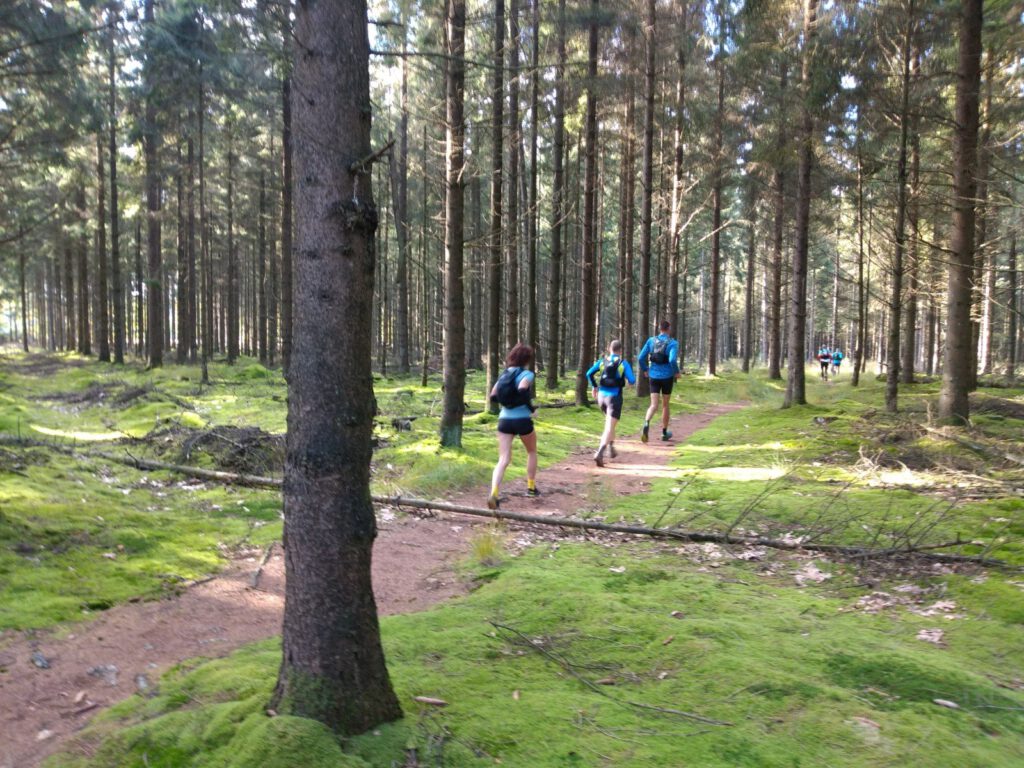
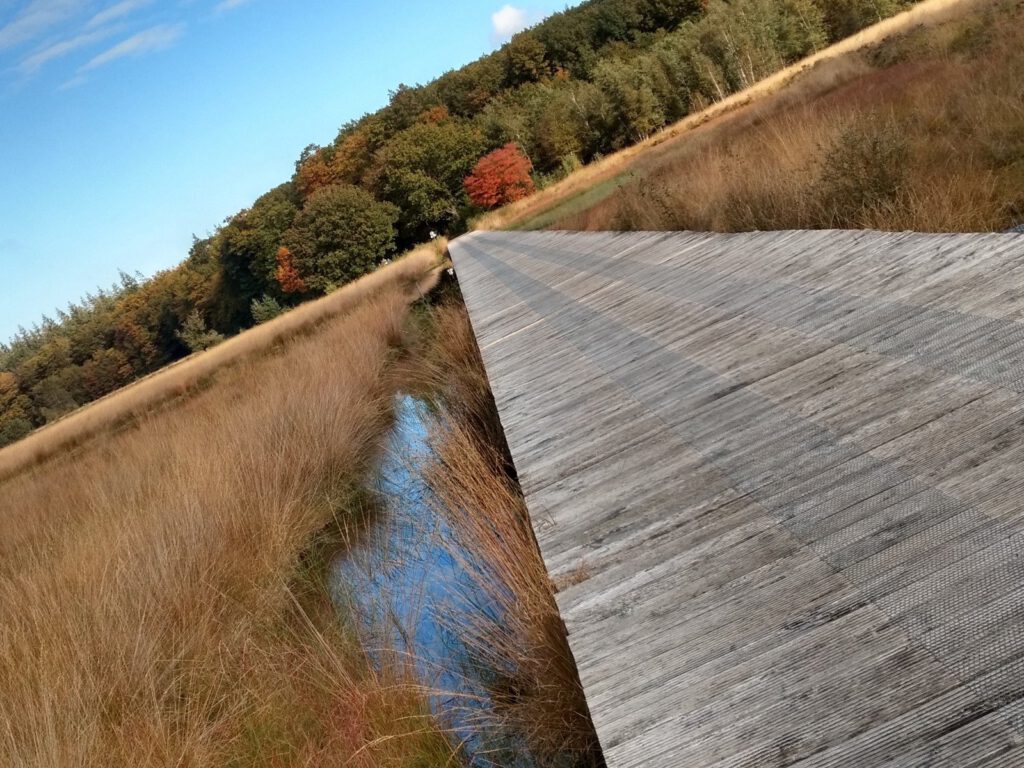
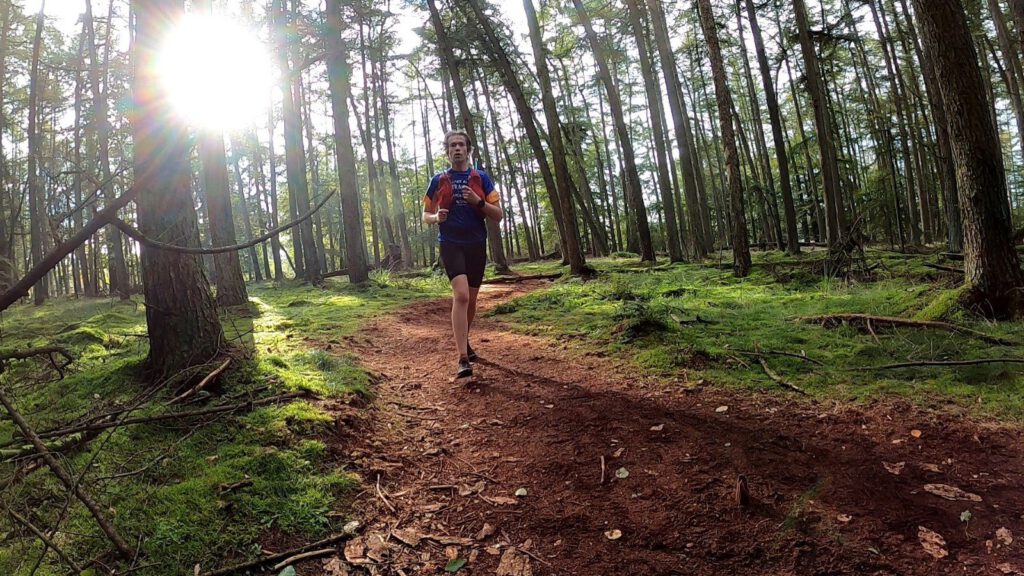
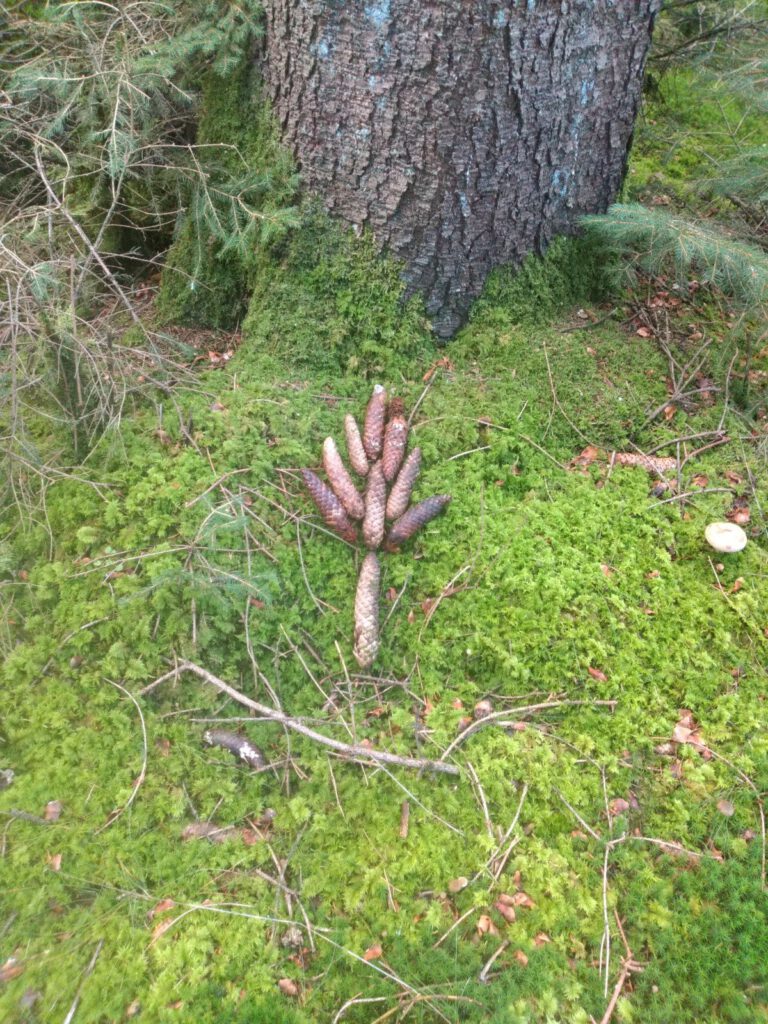
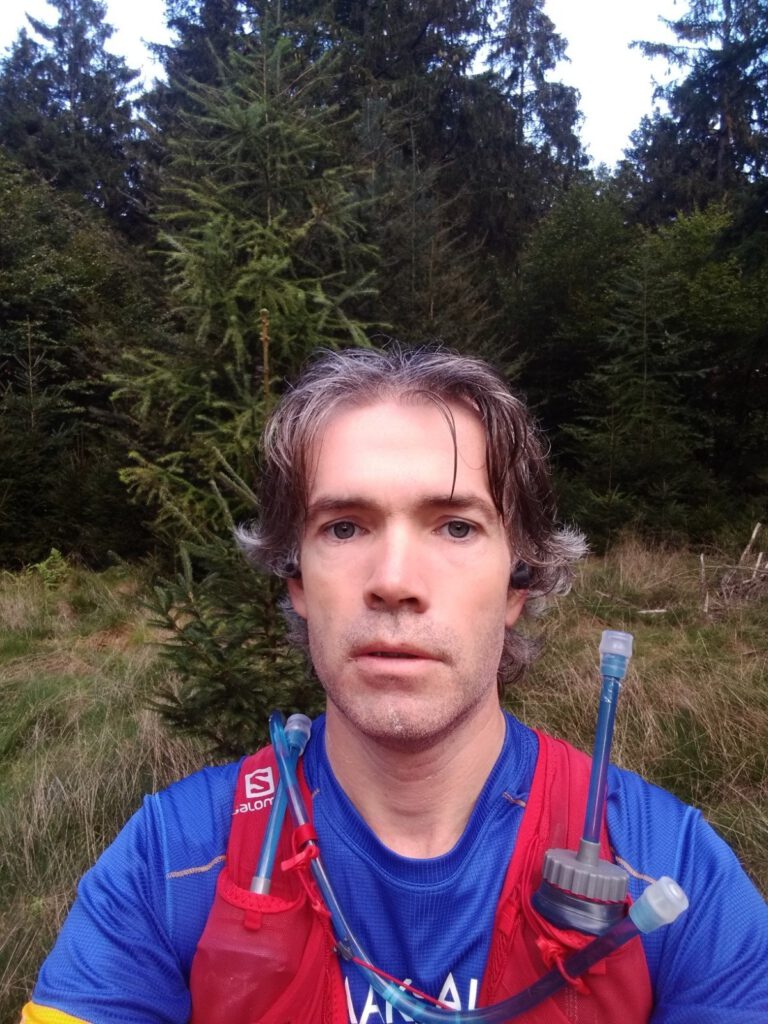
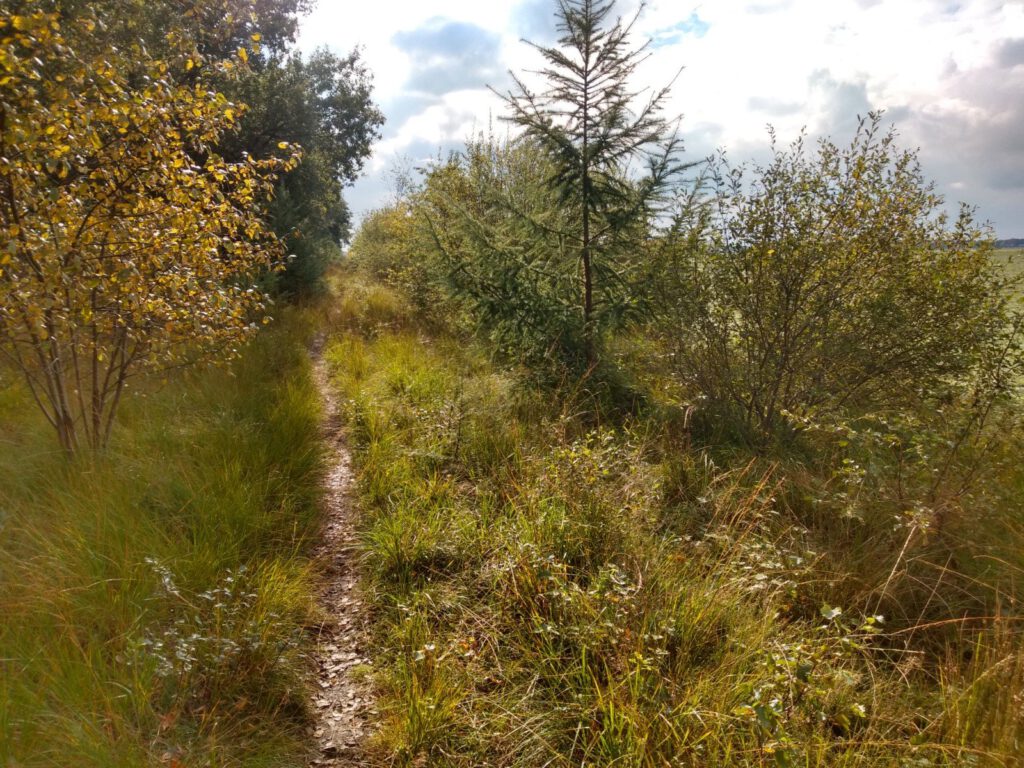
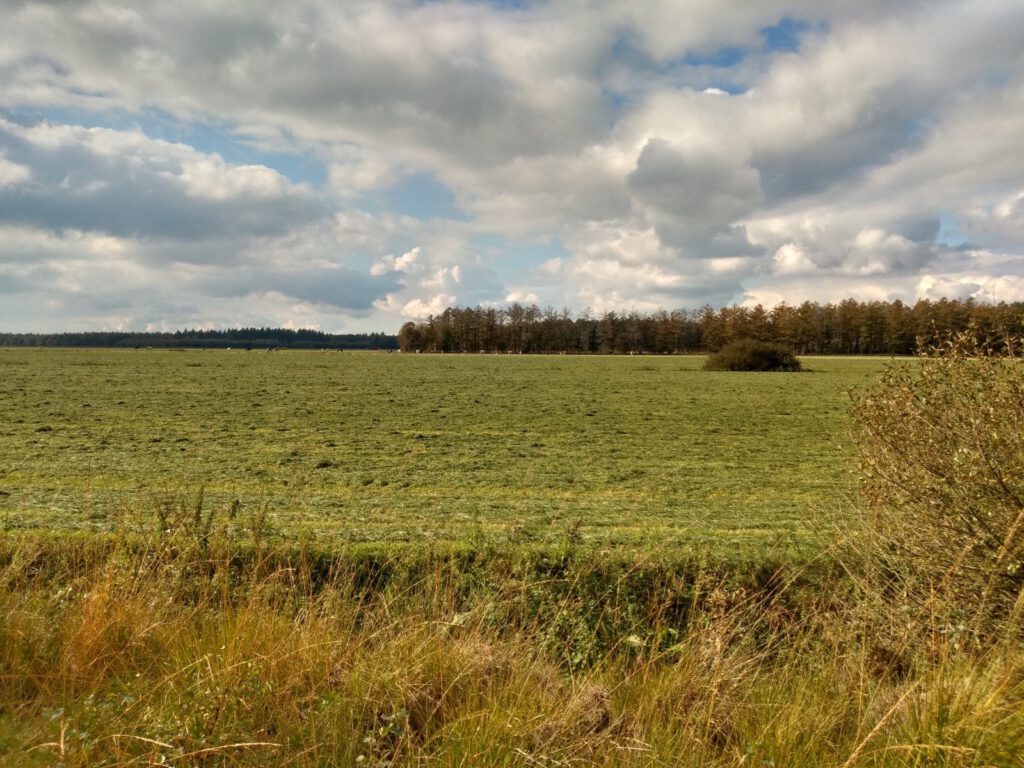
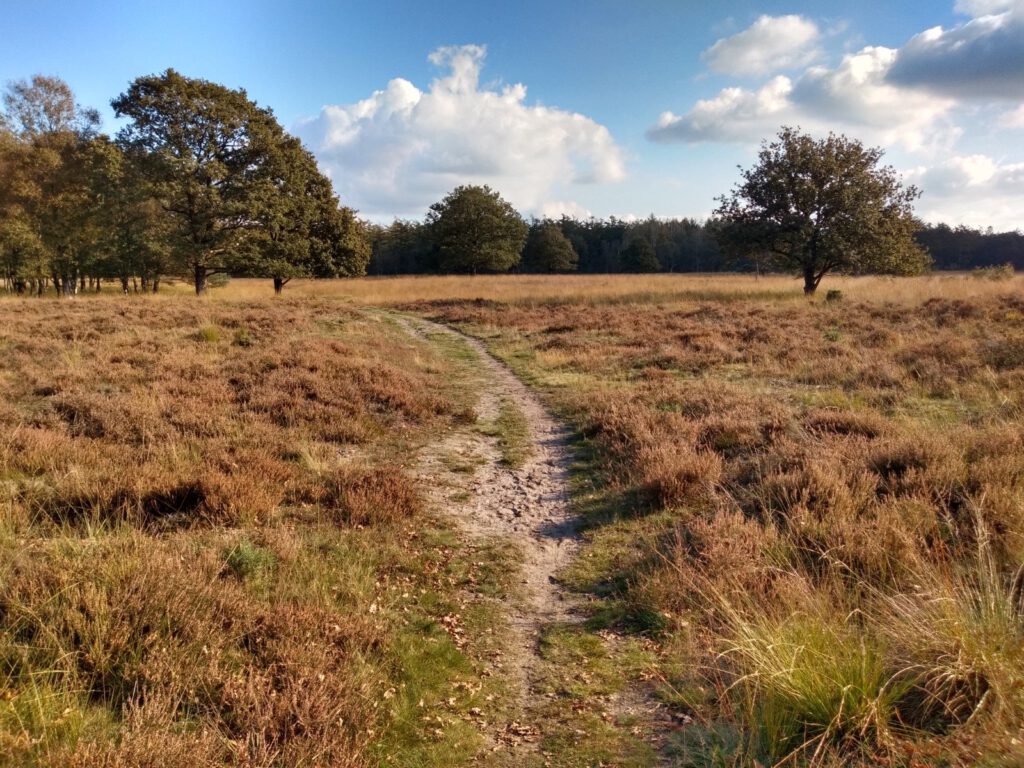
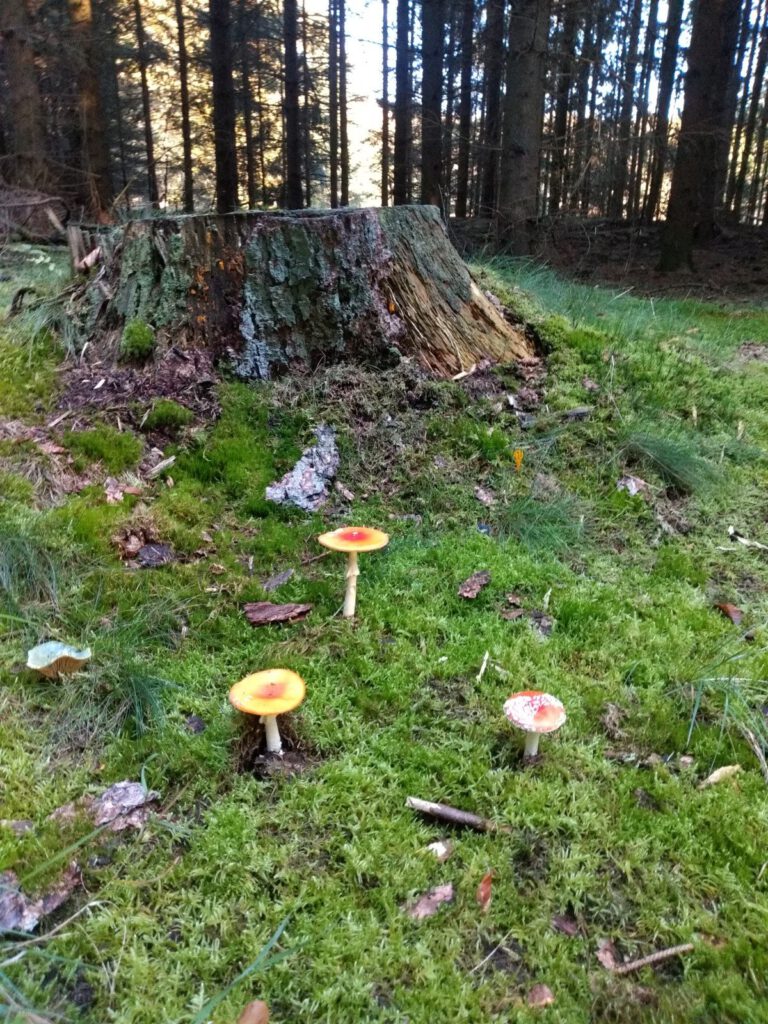
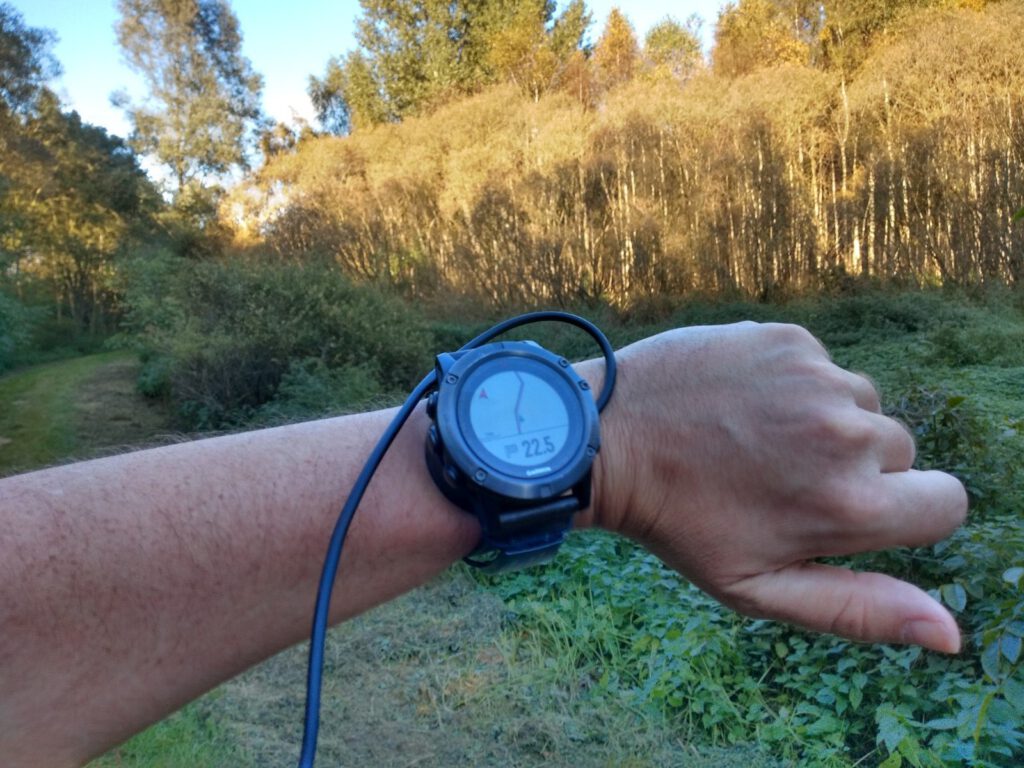

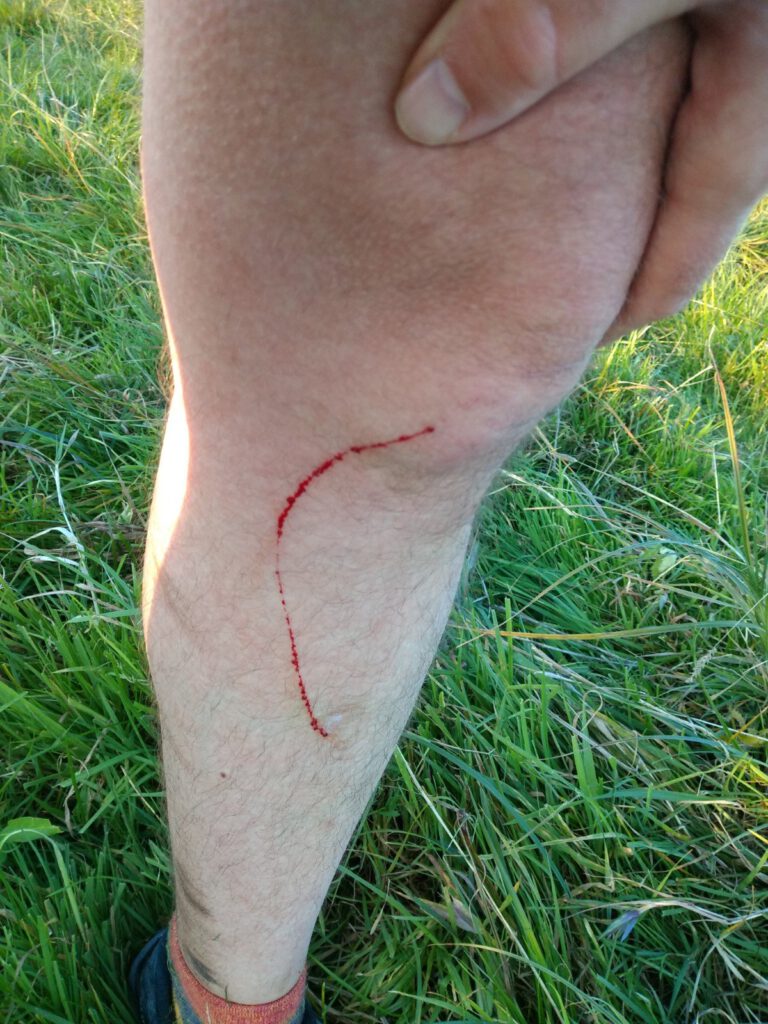
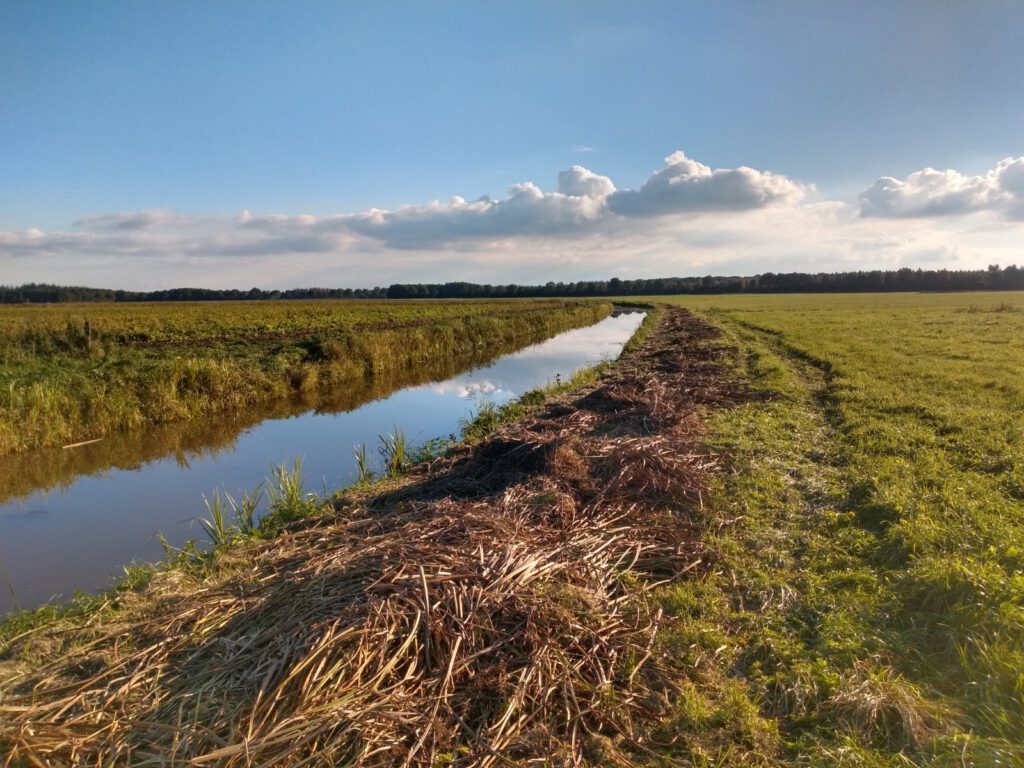
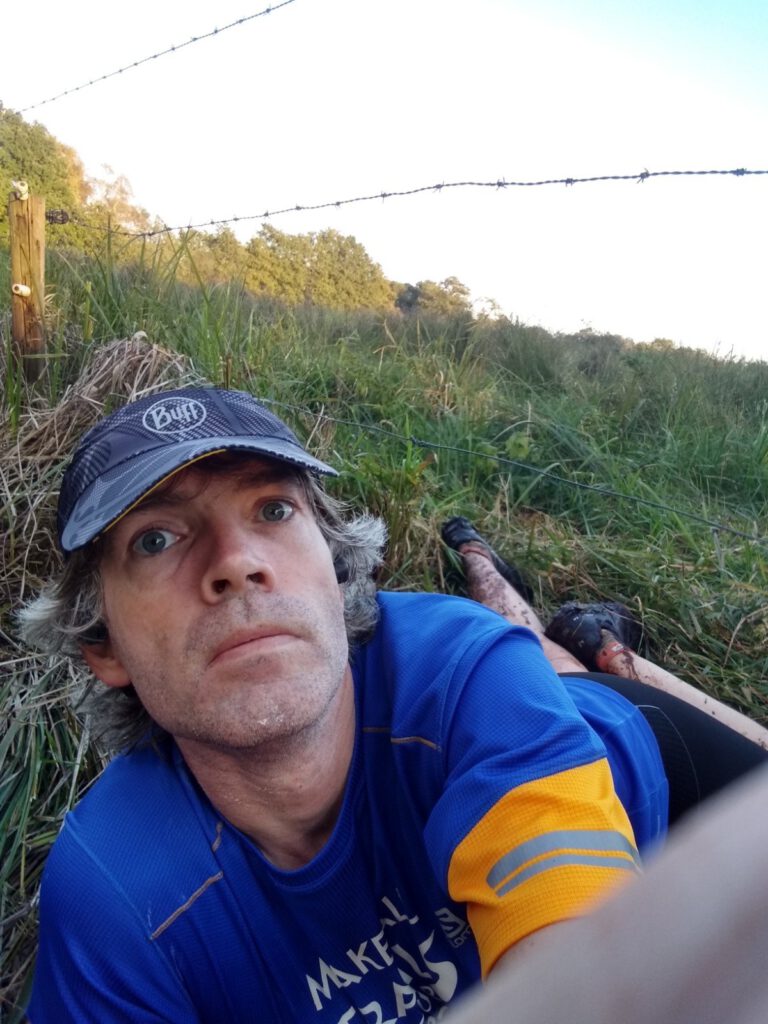
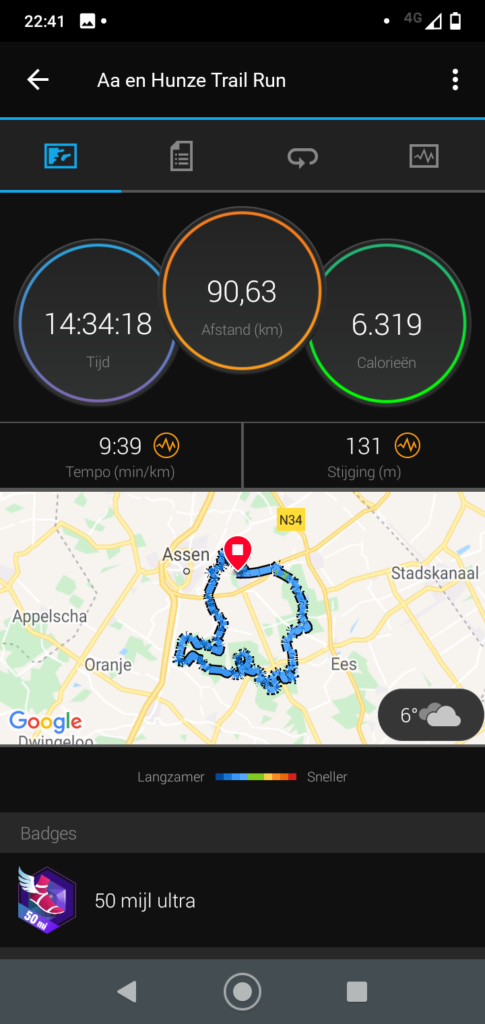
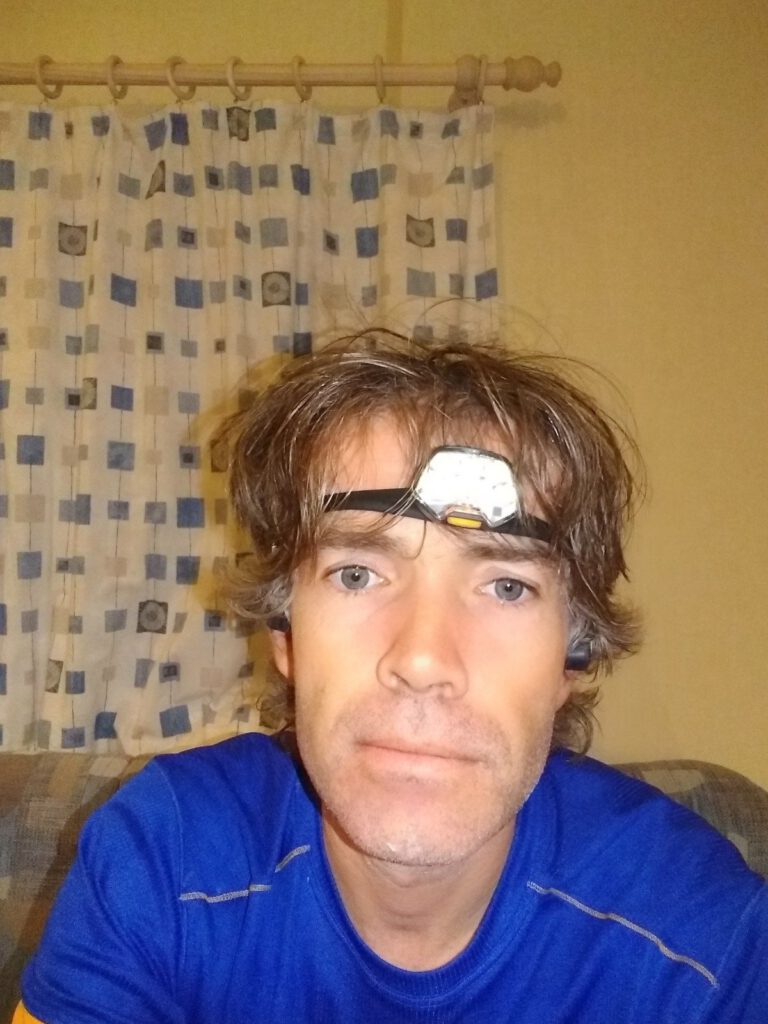
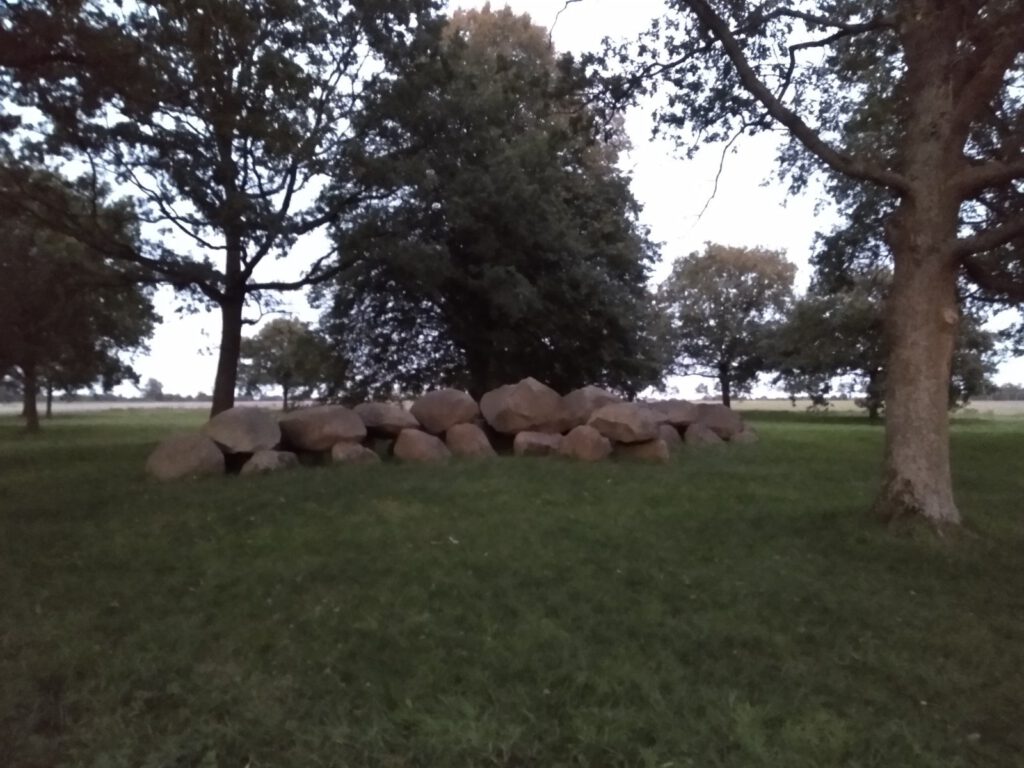
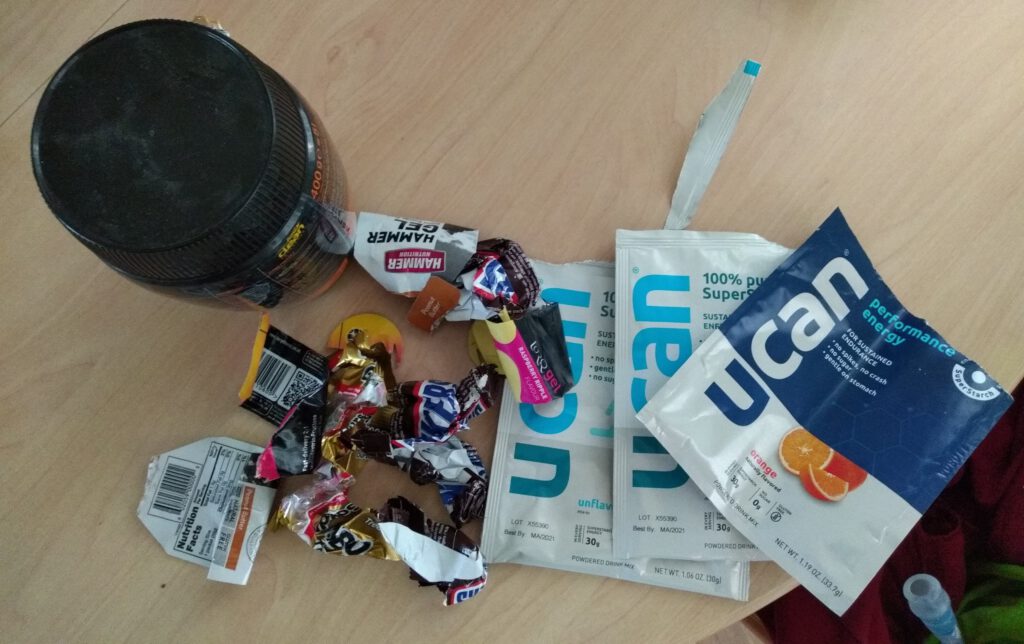

Wow Rutger, congratulations!!! Very clever of you to run this all by yourself. Your report reads like a thriller, especially because I didn't dare to do the virtual race myself.
I really had to think about it myself. The fact that my parents were relatively close helped (well, from the halfway point), but I really felt a compulsion/necessity to walk it.
Nice to read. I'm planning on walking, but I wonder if you had enough drinks with you or if you could fill up on the way.
I ended up drinking about it. But that was due to the weather and relatively low blood sugars. Especially the latter can make me very thirsty. There's no tapping on the road as long as the hospitality industry is closed. One even then is limited. The best thing to do then is to plan a bit around a village. Keep in mind that Drenthe is relatively sparsely populated.